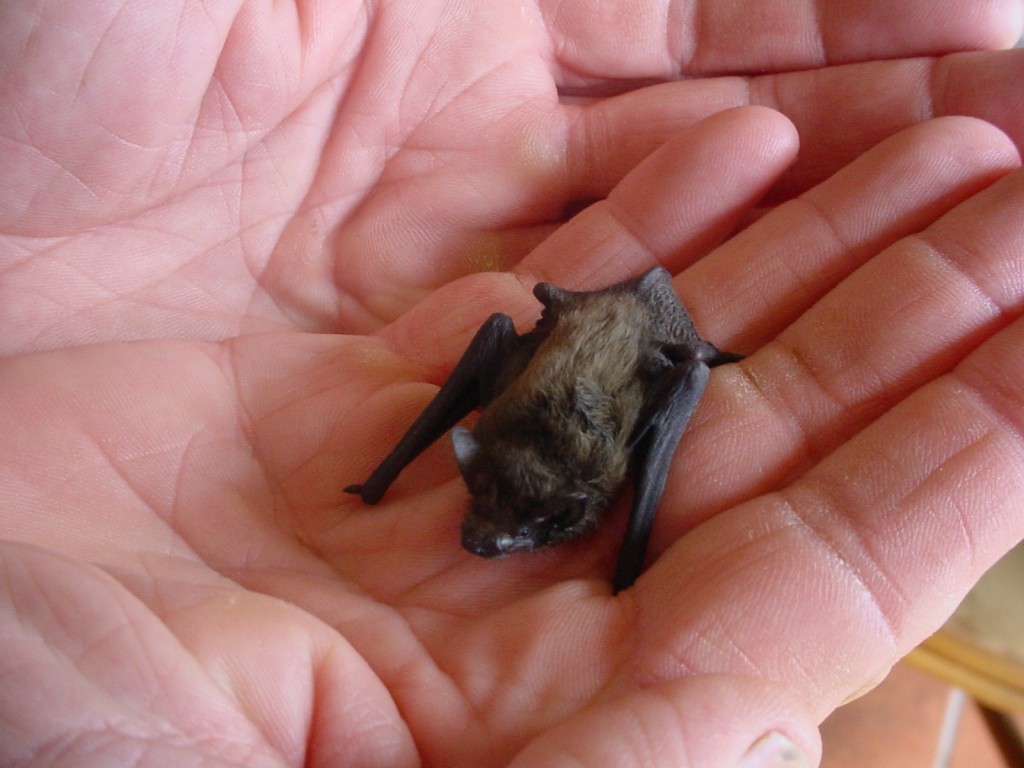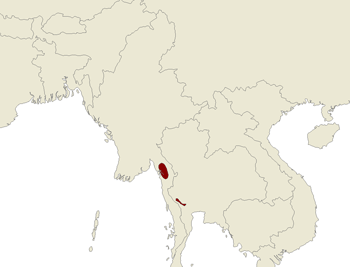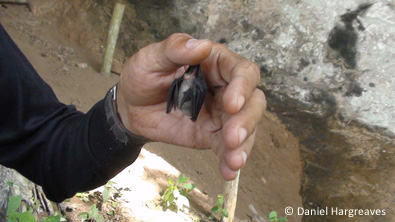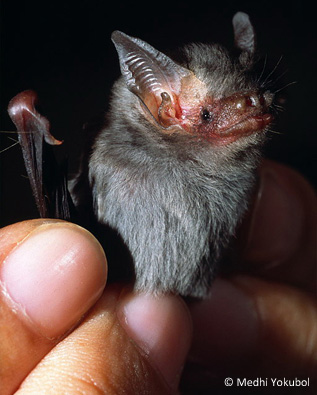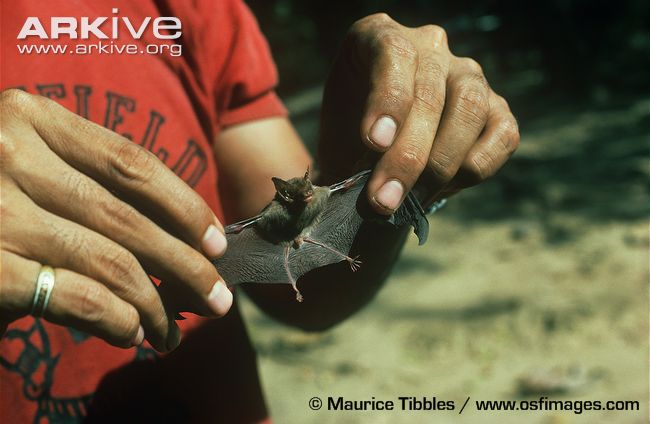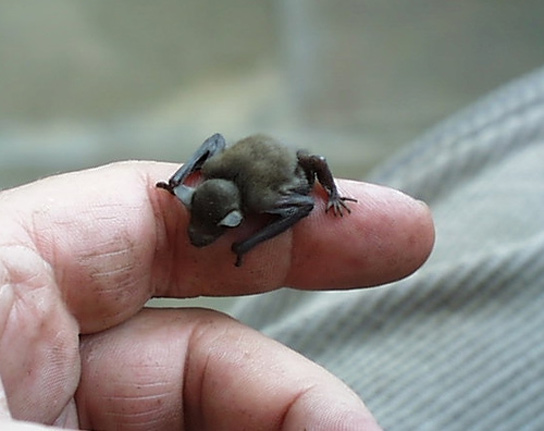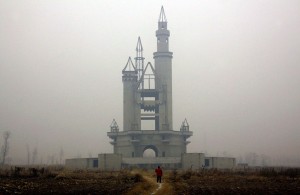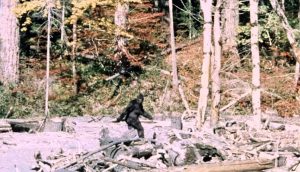Smallest Mammal In The World? The Bumblebee Bat
The bumblebee bat or Kitti’s hog-nosed bat (Craseonycteris thonglongyai) is arguably the smallest mammal known to man. The bumblebee bat only occurs in the limestone caves near rivers in western Thailand and southeast Burma. Of course, it’s endangered. There’s estimated to be between 4,000 and 10,000 left on earth. Here are the tiny patches of land where they can be found (if you’re very lucky, and quiet, and eagle-eyed):
This tiny bat is the last species left in the Craseonycteridae family of mammals. The bumblebee bat is thought to have split off from its nearest bat relative 43 million years ago, to put that into perspective, that was before the Himalayas had started to grow.
With a 3cm length, a weight of just a couple of grammes and it’s ability to hover, it’s no mystery that it’s called the bumblebee bat. Its slit like nostrils, swollen nose, fur concealed eyes and over sized ears mean that it’s not exactly a looker, but I’m assuming it doesn’t care. Like some other bats it has a large skin patch strung between its back legs, although it doesn’t have as much control of it during flight as other larger species, it is assumed it uses the pouch to help it catch lunch whilst on the wing.
The bumblebee bat was first discovered in 1974 at a single location, now another 8 limestone cave locations have been found. The bats roost in colonies of between 10 and 500 individuals (although it’s normally around 100) and choose to live right at the very back of the caverns. There are two distinct populations which are morphologically identical but have different echolocation calls.
The reason these bats were only fairly recently discovered (apart from their diminutive size) is that they only leave their roosts for half an hour in the evening and 20 minutes at dawn. They zip about, no more than 1 km from their homes, collect their insect supper and scoot back to the cover of their darkened caves.
In 2007, the bumblebee bat was identified by the Evolutionarily Distinct and Globally Endangered (EDGE) project as one of its Top 10 “focal species”. So their numbers seem to be dropping and tourism, deforestation and a new pipeline being built from Thailand to Burma are all likely to make things worse for the little guy. Other threats include Thai religious activities and the collection of guano.
If you fancy giving some cash to a charity that’s helping the bumblebee bat and other troubled species here you go: EDGE of Existence.
MORE ANIMAL STUFF:

